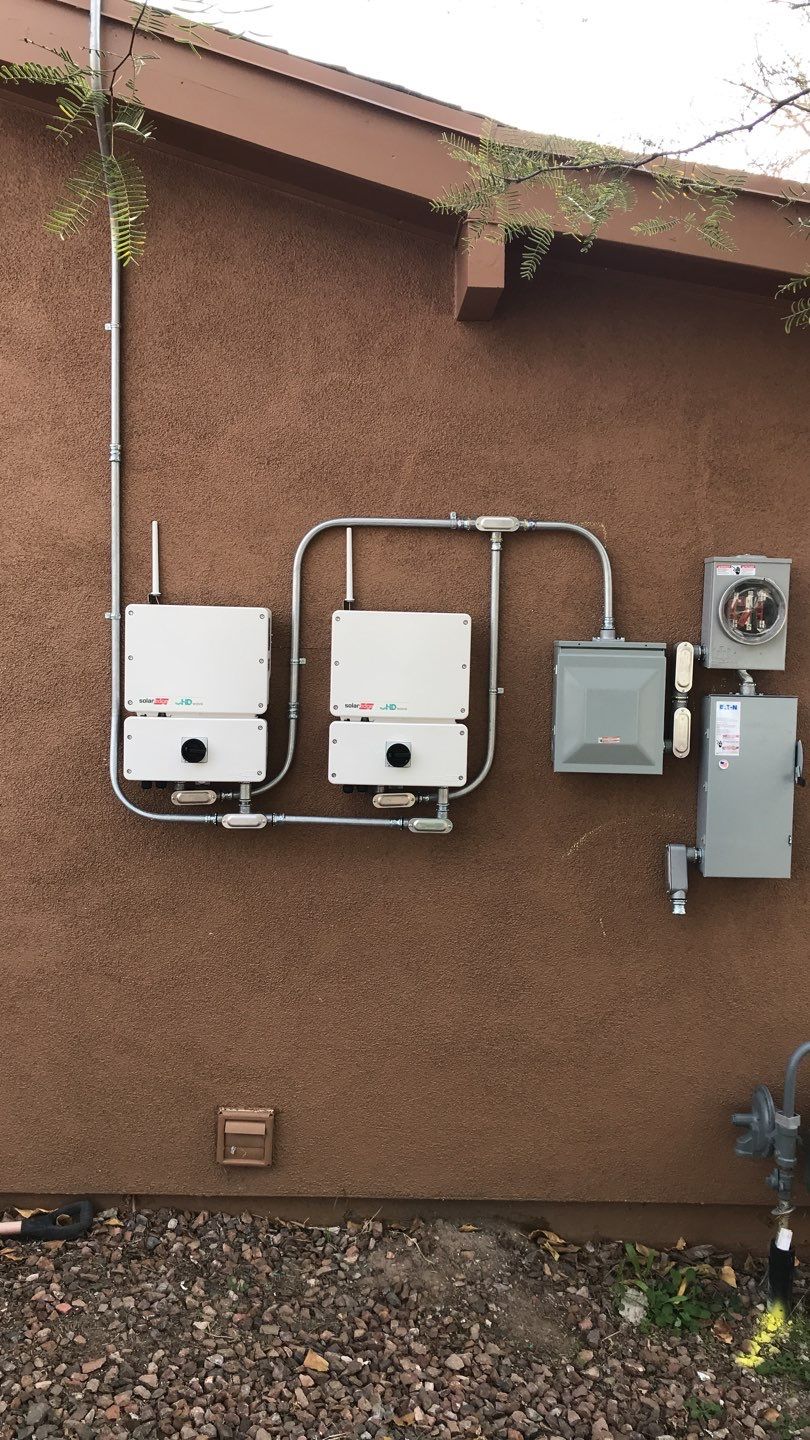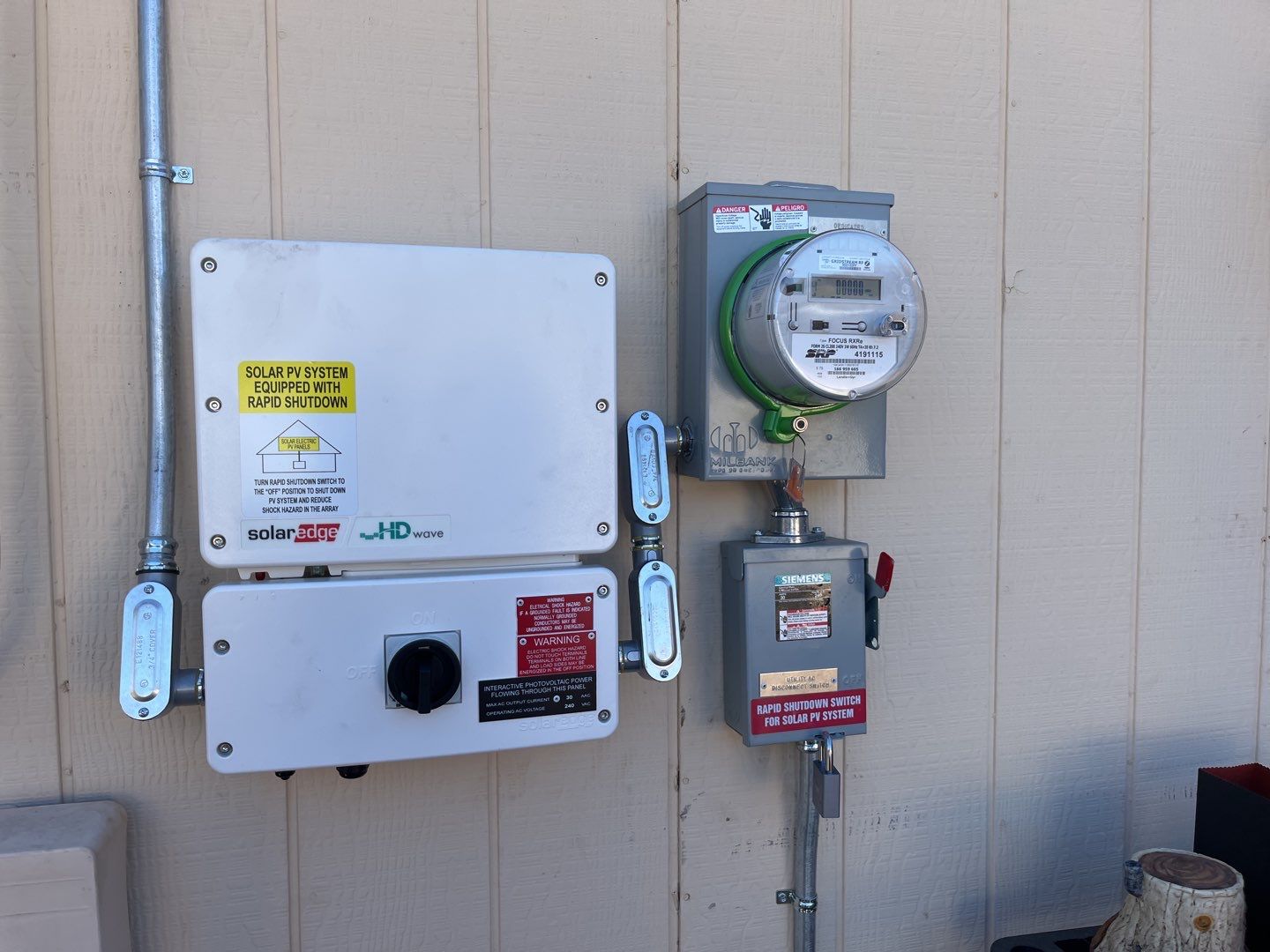Close

Solar panels create a direct current (DC). Your home and appliances run on alternating current (AC). A solar inverter takes the direct current (DC) energy from the solar panels and "inverts" it to alternating current (AC) which is what your home utilizes for energy.
Request a quote
Types of solar inverters:
String Inverters
String inverters were the original inverters to be used with PV systems and therefore make up a majority of the inverter marketplace. String inverters have been a popular choice for a long time due to their long life spans, limited maintenance requirements, and overall upfront cost.
To understand how a string inverter works, think back to the way older Christmas lights used to work. When you set up your strand of lights, as long as all of the lights were functioning properly, the rest of the strand functioned properly as well. If one of the lights went out though, the rest of the lights on the strand typically would lose production. This is similar to how string inverters work. A “string” of solar panels is connected together and if one of your solar panels on that string gets shaded, dirty, or malfunctions, then the rest of the solar panels on that string will have their performance affected. In conclusion, if your home has many surrounding trees or multiple roof planes, a string inverter may not be the most favorable option. However, if you live somewhere that gets a lot of sunshine and your house has a primarily south-facing roof, then a string inverter may be a great option for your home’s solar-powered system.
Optimized String Inverters
Optimized string inverters are similar to the original string inverter, except that there will be optimizers installed underneath each solar panel. The optimizers ensure you will receive the highest performance from each solar panel individually. This also gives you the ability to monitor individual panels and be able to easily identify any defective or shading issues. Optimized string inverters have a longer lifespan and typically will outperform the original string inverters. Optimized string inverters are the most commonly used inverter today and make up a majority of the installations in the US.
Microinverters
As its name suggests, microinverters are “micro-sized” inverters installed underneath each panel (similar to how optimizers are installed) allowing DC to convert to AC right on the roof. Optimizers transfer DC into a large inverter, which then converts the DC to AC. Microinverters operate alone, making each panel a single electrical system. Each panel having its own microinverter allows flexibility when it comes to the design and orientation of a PV system. This also makes it easier to expand your system in the future if need be.
Hybrid Inverters
Hybrid inverters are the newest technology when it comes to inverters. A hybrid inverter is a combination of a PV inverter and a battery inverter. If you are looking for battery backup options, or plan to add batteries to your PV system down the road, a hybrid inverter may be the best option for your home. Hybrid inverters make it easier and less expensive to install batteries on a home. Hybrid inverters also have the capability to connect with an Electric Vehicle charger. If you have an electric vehicle or plan to get one in the future, a hybrid inverter will be ready to be connected to your EV charger.
Have more questions regarding solar inverters?
Reach out to us and one of our solar specialists can help you select the best inverter for your home.